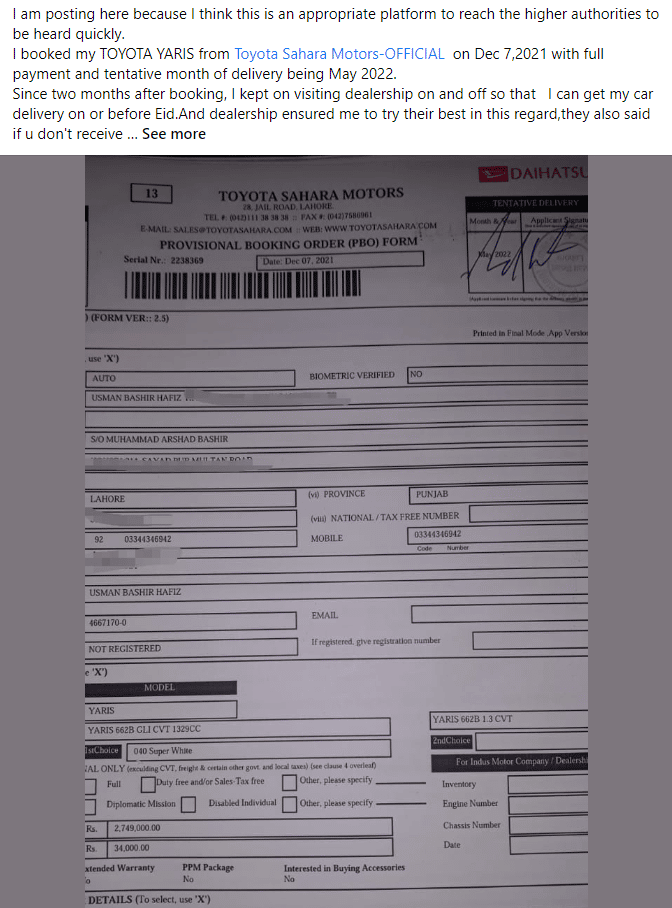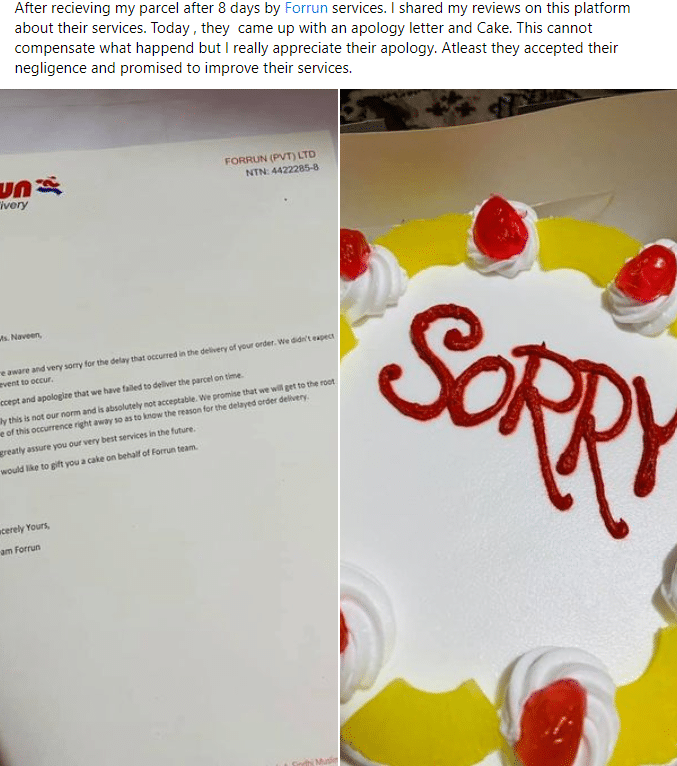Imagine 2 scenarios. First, a customer is unhappy with a product they’ve purchased and take to social media to express their displeasure. In the second, a customer is happy with a purchase, recommends the product to friends, and leaves positive reviews online.
Which scenario is preferable? The answer is obvious – the second.
The customer satisfaction rate is one of the most important performance indicators for any business. It’s a measure of how well a company meets or exceeds customer expectations. But according to the American Customer Satisfaction Index, customer satisfaction has been declining since 2018. In fact, it’s at its lowest point in more than a decade. Companies have been focusing on increasing their sales, promoting their brand, and expanding their operations. But in the process, they’ve forgotten the most important part of their business – the customer.
This is why it’s more important than ever to focus on customer satisfaction since businesses have turned digital. Because today, an angry customer is not just a lost customer – they’re a danger to your business. A single social media post can damage your reputation and cost you thousands of dollars in lost revenue. That’s why it’s essential to know how to deal with customer dissatisfaction. By handling complaints effectively, you can turn an unhappy customer into a brand ambassador.
In this article, we’ll show you how to do just that. We’ll cover:
- What is customer satisfaction?
- How to measure customer satisfaction
- Common causes of customer dissatisfaction
- The benefits of increasing customer satisfaction
- The costs of poor customer satisfaction
- How to improve customer satisfaction
By the end, you’ll have a complete understanding of customer satisfaction and how to improve it.
What is Customer Satisfaction?
Customer satisfaction is the degree of pleasure or displeasure that a customer experiences with a product or service. It’s a measure of how well a company meets or exceeds customer expectations. Customer satisfaction is important because it’s a key indicator of customer loyalty. Satisfied customers are more likely to buy from you again and recommend your products or services to others. On the other hand, dissatisfied customers are more likely to take their business elsewhere. In fact, it’s estimated that it costs six to seven times more to attract a new customer than it does to retain an existing one.
How to Measure Customer Satisfaction
There are a few different ways to measure customer satisfaction. We will briefly touch on the most common methods.
1) Net Promoter Score (NPS)
The Net Promoter Score is a customer loyalty metric that measures the likelihood of customers to recommend your product or service to others. It’s a metric that ranges from -100 to 100, with anything above 0 considered to be good. The NPS is calculated by subtracting the percentage of customers who are detractors from the percentage of customers who are promoters. For Clepher it’s hovering between 60-65. Which is outstanding 🙂
2) Customer Satisfaction Score (CSAT)
This one is pretty self-explanatory. The CSAT is a metric that measures customer satisfaction with a product or service on a scale of 1 to 5, with 5 being the highest. It’s good to measure the CSAT at different points in the customer journey, such as after a purchase or after customer support has been provided. CSAT can be a useful metric, but it’s important to keep in mind that it only measures satisfaction at a specific point in time. For instance, a customer may be satisfied with their purchase but then negatively experience customer service. In this case, the CSAT wouldn’t reflect the overall customer experience.
3) First Call Resolution (FCR)
First call resolution is a metric that measures the percentage of customer service calls that are resolved on the first call. It’s a good indicator of the quality of customer service and can be used to measure the effectiveness of customer service agents. When FCR is low, it’s an indication that customers are having to call back multiple times to get their issues resolved.
4) Customer Effort Score (CES)
The customer effort score is a metric that measures the amount of effort required by customers to resolve their issues. It’s on a scale of 1 to 5, with 5 being the highest. The CES is an excellent way to measure how easy it is for customers to do business with you. If the CES is high, it’s an indication that customers have to put in a lot of effort to get their issues resolved.
5) Customer Churn Rate
Customer churn rate is the percentage of customers who stop doing business with a company over a period of time. It’s a good indicator of customer satisfaction because it shows how many customers are leaving. A high churn rate is an indication that something is wrong, whether it’s the product, the service, or the company as a whole.
When to Measure Customer Satisfaction?
Customer satisfaction should be measured on a regular basis, such as monthly or quarterly. It’s also a good idea to measure customer satisfaction after key touchpoints, such as after a purchase or after customer support has been provided. This will give you a good idea of how well you’re meeting customer expectations and where there’s room for improvement.
What Causes Customer Dissatisfaction?
According to an article published in Wall Street Journal, there are a few common causes of customer dissatisfaction. These range from poor customer service to a bad product, and an increased number of social media platforms. Remember, customer dissatisfaction doesn’t always have to be a bad thing. In some cases, it can be an opportunity to improve your product or service. Many companies make the mistake of thinking a lost customer is easily replaceable. They focus on acquiring new customers, rather than retaining the ones they have. But it costs more to attract a new customer than it does to keep an existing one. In fact, it’s said to cost six to seven times more. This is why it’s so important to focus on customer retention. Not only will it save you money, but it will also improve your customer satisfaction rates.
Let’s discuss what the main causes of customer dissatisfaction are:
1. Issues in Quality
You know what they say, “The customer is always right.” Well, in most cases, they are. Customers have high expectations regarding the quality of a product or service. And if you’re not meeting those expectations, they’ll likely take their business elsewhere.
There are a few issues that can cause quality problems, such as:
- Poor materials: Using inferior materials will result in a lower-quality product.
- Poor workmanship: This is a common issue in manufacturing. If the quality of the workmanship is poor, the product will be of lower quality.
- Poor design: A poorly designed product will be of lower quality and less functional than one designed well.
If the quality of your product or service is poor, it’s likely that customers will be dissatisfied. This is because they’ll be expecting a certain level of quality and not receiving it.
Social media is filled with: Advertised vs. Delivered
We’ve all seen those social media posts where customers highlight a product that has perfect design, bright colors, and a high-quality finish. But when they receive the product, it’s not quite what they were expecting. This is because the advertising was misleading. It showed a perfect product when in reality, the product was of lower quality. This is a common issue that can cause customer dissatisfaction. Customers feel deceived when they see an advertisement that doesn’t match the quality of the product.
For instance, check this post from a furious customer who received a different product than what was advertised:

Online Shopping Scam
2) Pricing Issues
Customers are always looking for a good deal. And if they feel like they’re not getting one, they’ll be unhappy. Pricing issues are one of the main causes of customer dissatisfaction.
There are a few pricing issues that can cause problems, such as:
- Hidden fees: Customers don’t like it when charged hidden fees. This is because it feels like they’re being tricked into paying more than they should.
- Unclear pricing: Customers also don’t like it when pricing is unclear. This is because they don’t know how much they’ll be charged until they receive the final bill.
- Too expensive: In some cases, customers may simply feel like the price is too high. This is especially true if they feel like there are similar products or services that are cheaper.
Pricing is a sensitive issue for customers. And if they feel like they’re not getting a good deal, they’ll be unhappy. Check this screenshot of a customer complaining about Samsung. His point of view is about a sudden change in pricing:

Samsung Price Issue
Now, these posts on social media in major groups bash the company and discourage others from using their products.
3) Product Specifications
Customers have certain expectations when they purchase a product. And if the product doesn’t meet those expectations, they’ll be dissatisfied.
There are a few issues that can cause problems with product specifications, such as:
- Wrong size: If the product is the wrong size, it won’t be able to meet the customer’s needs.
- Wrong color: If the product is the wrong color, the customer may not be able to use it as intended.
- Wrong features: If the product doesn’t have the features that the customer wants, they’ll be disappointed.
Customers expect the product to meet their needs. And if it doesn’t, they’ll be unhappy. This is a common issue that can cause customer dissatisfaction.
4) Poor Customer Service
Customer service is a critical part of any business. And if it’s not up to par, customers will be dissatisfied. I emphasize “up to par” because customer service is not a one-time event. It’s an ongoing process that should be constantly monitored and improved. There are a few issues that can cause problems with customer service, such as:
- Long wait times: Customers don’t like to wait. If they have to wait too long for help, they’ll be unhappy.
- Rude employees: Customers also don’t like it when they’re treated rudely. This is because it makes them feel like they’re not valued.
- Lack of knowledge: If the customer service representatives don’t have the knowledge to help the customer, they’ll be dissatisfied.
- Limited customer service hours: If the customer service hours are limited, it will be difficult for customers to get the help they need. For instance, if customer service is only available during business hours, it will be difficult for customers who work during those hours to get help.
Customer service is a critical part of any business. And if it’s not up to par, customers will be dissatisfied.
5) Shipping Issues
Shipping issues are another common cause of customer dissatisfaction. There are a few shipping issues that can cause problems, such as:
- Long wait times: Customers don’t like to wait. If they have to wait too long for their product, they’ll be unhappy. This issue has become so prevalent that Amazon has started offering free one-day shipping for Prime members.
Check this screenshot about Toyota customer’s shipping issues:

Toyota Shipping Issue
As you can see, the customer is not happy about the long wait time. Such incidents damage the company’s reputation and discourage others from using their products.
- Damaged product: Customers also don’t like it when their product arrives damaged. This shows that the company doesn’t care about their customers.
- Lost product: If the customer’s product is lost, they’ll be very dissatisfied. This is because they paid for the product and didn’t receive it.
Shipping issues are a common cause of customer dissatisfaction. And if they’re not resolved quickly, they can damage the company’s reputation.
6) Issues with Usability
Usability issues are another common cause of customer dissatisfaction.
There are a few usability issues that can cause problems, such as:
- Difficult to use: Customers will be frustrated if the product is difficult to use. And if they can’t figure out how to use it, they’ll be even more frustrated.
- Confusing: If the product is confusing, customers will have a hard time using it.
- Not user-friendly: Customers will be unhappy if the product is not user-friendly.
Usability issues are a common cause of customer dissatisfaction. And if they’re not resolved quickly, they can damage the company’s reputation. There are some more causes, too such as Billing issues, Lack of features, and so on. But these are the most common causes of customer dissatisfaction.
We talked initially that companies do not pay much attention to these causes and are busy finding new customers.
Effects of Customer Dissatisfaction on Businesses
Customer dissatisfaction doesn’t just cause problems for the customer. It also causes problems for the company. It’s 2022. Everything has transformed so much. We get food delivered to our doorstep within minutes; clothes are delivered the same day, we can book a cab in seconds, and so on. The customer’s expectations have increased manifold, and they are no longer satisfied with the traditional methods of customer service.
They want instant gratification, and if they don’t get it, they’ll be unhappy.
Following are the effects of customer dissatisfaction:
1) Negative Reviews
One of the most common effects of customer dissatisfaction is negative reviews. These days, customers leave reviews for everything they buy. And if they’re unhappy with the product or service, they’ll leave a negative review. These reviews can damage the company’s reputation and discourage others from using their products. Remember, 89% of the customers read online reviews before making a purchase. So, if your company has a lot of negative reviews, it’ll be difficult to attract new customers. In fact, you might even lose some of your existing customers.
2) Poor Lead Generation and Conversion
This is true! Customer dissatisfaction can lead to poor lead generation and conversion. If customers are unhappy with your product, they’re not going to recommend it to their friends or family. And if they’re not recommending it, you’re not going to get new leads. What’s more, if you’re getting new leads, they’re not going to convert. Just like each drop of oil reduces the engine’s efficiency, each dissatisfied customer reduces your company’s efficiency.
3) Loss of Revenue
Most KPIs are associated with revenue. If customer satisfaction is low, it’ll have an impact on revenue. In fact, it can even lead to a loss of revenue. This is because dissatisfied customers are less likely to buy from the company again. And if they don’t buy from the company, the company won’t make any money.
4) Damage to the Company’s Reputation
As we’ve seen, customer dissatisfaction can lead to negative reviews. These negative reviews can damage the company’s reputation. A damaged reputation is difficult to repair. And it can take years to build up a good reputation. So, if the company’s reputation is damaged, it’ll have a hard time attracting new customers. Take it as an example. You must have heard of the company “Uber”. It’s a ride-sharing company that was founded in 2009. In just 10 years, it became one of the most valuable companies in the world. But in 2017, it faced a lot of backlash due to sexual harassment allegations. As a result, its reputation was damaged. And it lost a lot of customers.
5) High Customer Churn Rate
Customer churn is the percentage of customers who stop using a company’s products or services. And this is one of the most negative effects of customer dissatisfaction. When customers are unhappy, they’re more likely to switch to a competitor. And when they switch, it’s called customer churn. A high customer churn rate is bad for business. It means that the company is losing a lot of customers. And it takes a lot of time, effort, and money to acquire new customers. So, it’s important to keep the customer churn rate low. These are some of the most common effects of customer dissatisfaction. As you can see, they’re all negative. So, it’s important to handle customer dissatisfaction in the right way.
Now that we know the effects of customer dissatisfaction, let’s take a look at how to handle it. Before we get into the details, there are two important things to keep in mind:
- The goal is to reduce customer churn
- You need to handle each case differently
With that said, let’s get started.
How to Handle Customer Dissatisfaction?
Following are some of the most effective ways to handle customer dissatisfaction:
1) Set Up Effective Customer Feedback Channels
The first step is to set up effective customer feedback channels. You need to make it easy for customers to give feedback. And you need to have a system in place to track that feedback. One of the best ways to do this is to use customer surveys. You can use online surveys, phone surveys, or in-person surveys. Another way to get feedback is to use customer service software. This software allows customers to give feedback through an online form. You can also use social media to get feedback. You can set up a hashtag and ask customers to use it to give feedback. Take it as an example. Many companies use Formplus to collect customer feedback. You can send surveys through email or embed them on your website. The point is to make it easy for customers to give feedback.
2) Improve Customer Support with Chatbots
Customer support is one of the most important factors in customer satisfaction. 65% of the customers have high expectations from the customer support team. So, it’s important to have a strong customer support team. But that’s not always possible for your team to handle 24/7. This is where chatbots come in. 87% of the customers interact with chatbots for customer support. Customer support has been transforming with the help of technology. And chatbots are one of the most popular technologies. Personalization is the biggest reason companies are turning to chatbots. You can use chatbots to personalize the customer experience.
For example, you can use a chatbot to greet the customer by name. You can also use a chatbot to give recommendations based on the customer’s purchase history. Customer service is the new battlefield. And chatbots are one of the most powerful weapons. At a time, when companies are struggling to handle customer support, chatbots can be a game-changer.
Check this screenshot from Clepher:

Clepher Bot
See how personalized the message is? If a customer comes yealing about a product, won’t this personalized experience calm them down? This is just one example of how you can use chatbots for customer support.
3) Respond to Negative Reviews Quickly
In the age of social media, negative reviews can spread like wildfire. And that can be bad for business. So, it’s important to respond to negative reviews quickly. You need to have a system in place to track all the reviews. And you need to respond to them quickly.
Here are some tips for responding to negative reviews:
- First, acknowledge the problem and try to handle it professionally
- Acknowledge the customer’s feelings
- Take responsibility for the problem
- Apologize to the customer
- Offer a solution to the problem
- Follow up with the customer after the problem is solved
You need to be careful about how you respond to negative reviews. You don’t want to make the situation worse.
4) Solve the Query Online
One of the best ways to handle customer dissatisfaction is to solve their queries online. Because when customers get an impressive response to their queries, they are more likely to shout out to their followers about your brand. Moreover, when customers share negative feedback about a brand online, they are more likely to share the experience after you have solved their queries. Chances are they will share appreciation posts for your brand and services.
Check this screenshot:

Broadway Pizza Appreciation Post
Check customers are appreciating Broadway Pizza for listening to complaints and responding quickly. Such posts encourage other customers to try your brand as well. Besides, when you solve the customer’s queries online, it builds trust and credibility for your brand.
5) Get to the Root of the Problem
The best way to handle customer dissatisfaction is to get to the root of the problem. You need to find out what’s causing the dissatisfaction. Is it the product? Or is it the customer service? Is it the delivery? Once you find out the root cause of the problem, you can take steps to solve it. For example, if the root cause of the problem is the product, you can work on improving the quality of the product. If the root cause of the problem is customer service, you can work on training your customer service team. If the root cause of the problem is the delivery, you can work on improving the delivery process. You need to take action to solve the root cause of the problem. Otherwise, the dissatisfaction will keep coming back.
6) Provide Compensation
In some cases, you may need to provide compensation to the customer. This is usually done when the problem is caused by the company. For example, if there’s a problem with the product, you may need to provide a refund or a replacement. If there’s a problem with the delivery, you may need to provide a refund or a credit. Or possibly you can share an apology gift like a cake or a flower bouquet.

Forrun Services Apology
Check this appreciation post: This Sorry cake is from Forrun Courier service to one of their customers. Providing compensation is a way to show the customer that you’re sorry for the inconvenience and that you’re willing to make it right. In some cases, you may need to provide compensation to the customer even if the problem is not caused by the company. For example, if a customer is unhappy because they had to wait a long time for their order, you may need to provide a discount on their next purchase.
7) Take Action Immediately
Once you find out about the dissatisfaction, you need to take action immediately. The longer you wait, the worse it will get. You need to find out the root cause of the dissatisfaction and take action to solve it. You also need to respond to the customer quickly. The longer you wait, the more damage it will do to your reputation. Moreover, you need to take action to prevent the dissatisfaction from happening again in the future. You need to put systems and processes in place to prevent the same problem from happening again.
Conclusion
Customer dissatisfaction is a serious problem that can damage your reputation and business. So, it’s important to handle it carefully. You need to find out the root cause of the problem and take action to solve it. You also need to respond to the customer quickly. The longer you wait, the more damage it will do to your reputation. Moreover, you need to take action to prevent the dissatisfaction from happening again in the future. You need to put systems and processes in place to prevent the same problem from happening again.
Related Posts



